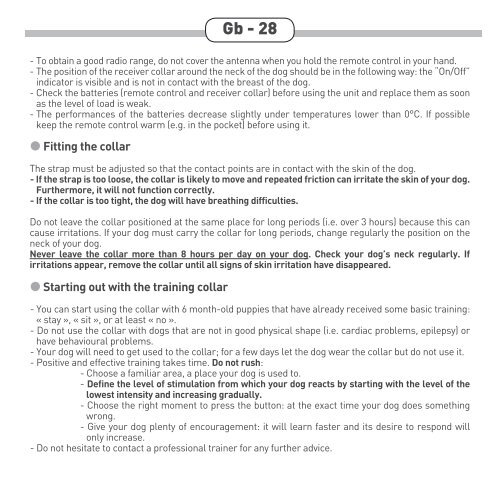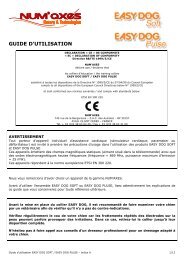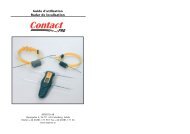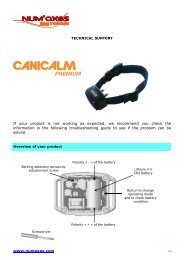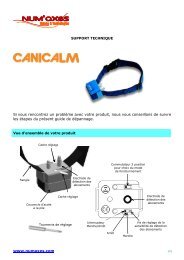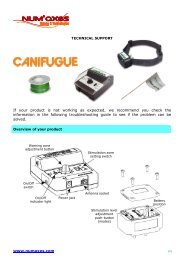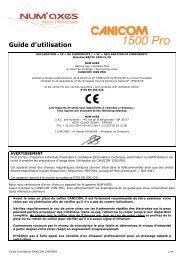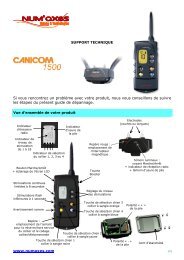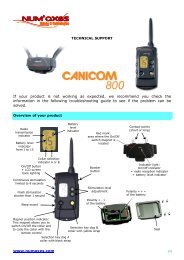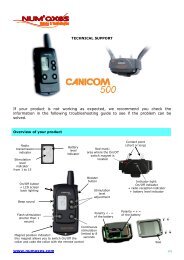Guide d'utilisation Fr - 3 User's guide Gb - 19 Manual de ... - Num'Axes
Guide d'utilisation Fr - 3 User's guide Gb - 19 Manual de ... - Num'Axes
Guide d'utilisation Fr - 3 User's guide Gb - 19 Manual de ... - Num'Axes
Create successful ePaper yourself
Turn your PDF publications into a flip-book with our unique Google optimized e-Paper software.
<strong>Gb</strong> - 28- To obtain a good radio range, do not cover the antenna when you hold the remote control in your hand.- The position of the receiver collar around the neck of the dog should be in the following way: the “On/Off”indicator is visible and is not in contact with the breast of the dog.- Check the batteries (remote control and receiver collar) before using the unit and replace them as soonas the level of load is weak.- The performances of the batteries <strong>de</strong>crease slightly un<strong>de</strong>r temperatures lower than 0°C. If possiblekeep the remote control warm (e.g. in the pocket) before using it.• Fitting the collarThe strap must be adjusted so that the contact points are in contact with the skin of the dog.- If the strap is too loose, the collar is likely to move and repeated friction can irritate the skin of your dog.Furthermore, it will not function correctly.- If the collar is too tight, the dog will have breathing difficulties.Do not leave the collar positioned at the same place for long periods (i.e. over 3 hours) because this cancause irritations. If your dog must carry the collar for long periods, change regularly the position on theneck of your dog.Never leave the collar more than 8 hours per day on your dog. Check your dog’s neck regularly. Ifirritations appear, remove the collar until all signs of skin irritation have disappeared.• Starting out with the training collar- You can start using the collar with 6 month-old puppies that have already received some basic training:« stay », « sit », or at least « no ».- Do not use the collar with dogs that are not in good physical shape (i.e. cardiac problems, epilepsy) orhave behavioural problems.- Your dog will need to get used to the collar; for a few days let the dog wear the collar but do not use it.- Positive and effective training takes time. Do not rush:- Choose a familiar area, a place your dog is used to.- Define the level of stimulation from which your dog reacts by starting with the level of thelowest intensity and increasing gradually.- Choose the right moment to press the button: at the exact time your dog does somethingwrong.- Give your dog plenty of encouragement: it will learn faster and its <strong>de</strong>sire to respond willonly increase.- Do not hesitate to contact a professional trainer for any further advice.


